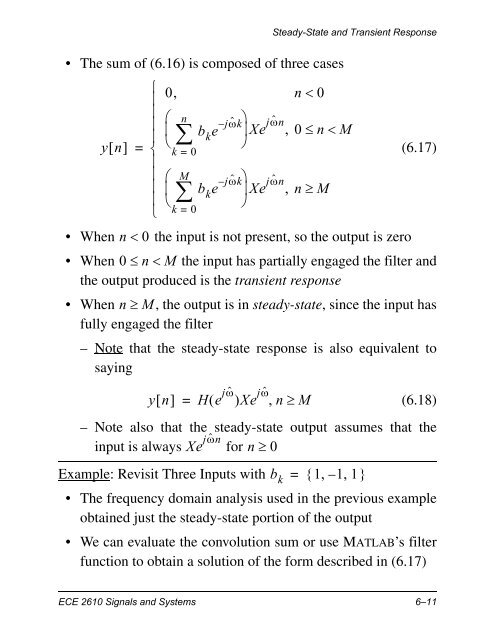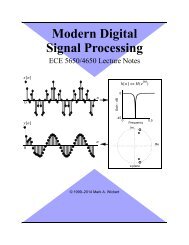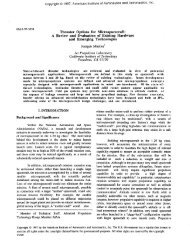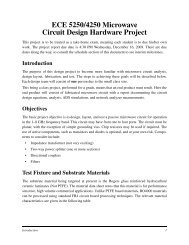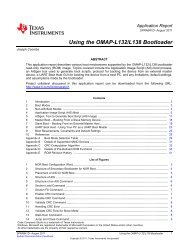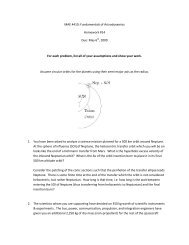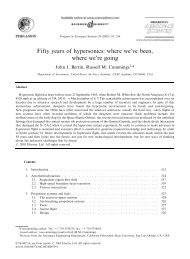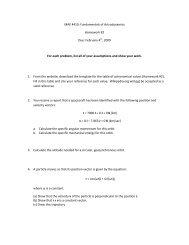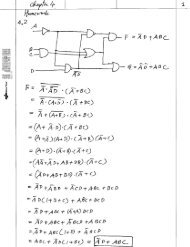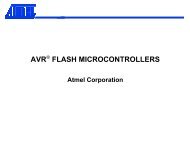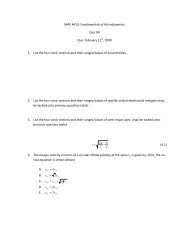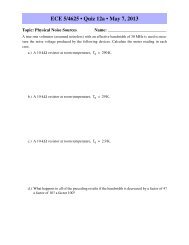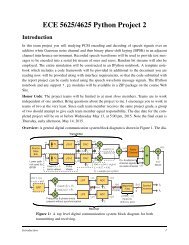You also want an ePaper? Increase the reach of your titles
YUMPU automatically turns print PDFs into web optimized ePapers that Google loves.
• The sum <strong>of</strong> (6.16) is composed <strong>of</strong> three cases• Whenyn =n 00, n 0n–b ke jˆ k jˆ Xe n ,0 n Mk = 0 M–b ke jˆ k jˆ n Xe , n Mk = 0Steady-State and Transient <strong>Response</strong>the input is not present, so the output is zero(6.17)• When 0 n M the input has partially engaged the filter andthe output produced is the transient response• When n M, the output is in steady-state, since the input hasfully engaged the filter– Note that the steady-state response is also equivalent tosayingyn He jˆXe jˆ(6.18)– Note also that the steady-state output assumes that theinput is always Xe jˆ nfor n 0Example: Revisit Three Inputs with= n Mb k= 1– 11• The frequency domain analysis used in the previous exampleobtained just the steady-state portion <strong>of</strong> the output• We can evaluate the convolution sum or use MATLAB’s filterfunction to obtain a solution <strong>of</strong> the form described in (6.17)ECE 2610 Signals and Systems 6–11


